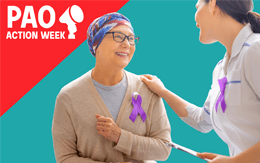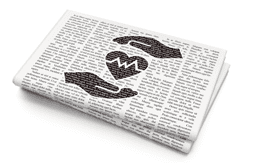When my brother-in-law, Nick was 39, he was diagnosed with late-stage liver cancer. At the University of Minnesota Medical Center, his team of providers told him to go home and spend his last 6 to 12 months as comfortable as possible and prepare for the end of his life. At the Mayo Clinic, he then sought a second opinion and was given the same bleak prognosis. His life was good with a wife and 3 young children, which made it difficult to accept this advice. With both institutions having group-think, he knew he needed to get outside this community to seek an alternative way of looking at his cancer.
This desire to seek additional medical opinions doesn’t happen often enough. So many people listen to their healthcare professionals (HCPs) and assume that their advice is to be taken as fact as opposed to opinion. Unfortunately for so many patients, they remain misdiagnosed and/or mistreated with their conditions, diseases, or disorders. Many die.
This is why it’s so important for the biopharmaceutical companies to seek varying insight from medical experts in the advisory board setting. Most HCPs seem to have their own opinion, yet so often, they are wrong.
Throughout my career, one of the highlights has been my involvement in hundreds of advisory boards, listening to thousands of opinions from thought leaders, key opinion leaders (KOLs), clinicians, and other experts in medicine. When I first began talking to experts during these meetings as a young marketer at Merck, I was surprised at how often physicians disagreed with current diagnoses and treatment standards of care. Physicians are usually willing to express their opinions, even when they are directly contradictory to other experts in the field. Most of the time, they feel they are right. Yet, not everyone can be right when opinions are opposing.
In fact, James Naessens, ScD, has spent his career researching the quality of healthcare and how changes in the way it is delivered may impact patient outcomes. In his groundbreaking research at the Mayo Clinic, he conducted a thorough analyses aimed at reviewing the frequency in which a second referral agrees with the first opinion.1 In his retrospective study of 286 patients referred by physician assistants, nurse practitioners, and primary care physicians, only 12% of the cases from the referring practitioner were the same as the final diagnosis. That means that after patients sought a second opinion, 88% of the time they went home with a new or refined diagnosis—changing their care plan and potentially saving their lives. Conversely, only 12% received confirmation that the original diagnosis was complete and correct. These data were highly statistically significant (P≤0.0001).1
“Effective and efficient treatment depends on the right diagnosis,” explains Dr. Naessens. “Knowing that more than 1 out of every 5 referral patients may be completely [and] incorrectly diagnosed is troubling—not only because of the safety risks for these patients prior to correct diagnosis, but also because of the patients we assume are not being referred at all.”1
With the understanding that HCPs are often wrong, how do we effectively develop accurate concepts in the biopharmaceutical world when we hear so many different opinions? How do we know which experts or KOLs are correct? I believe in the theory coined in a book by James Surowiecki called The Wisdom of Crowds,2 which supports the idea that groups of people are collectively smarter than individual experts when it comes to problem-solving, decision making, innovating, and predicting. The idea is that the viewpoint of one individual can inherently be biased, whereas taking the average knowledge of a crowd can result in eliminating the bias or noise to produce a clearer more coherent result. This is why advisory boards matter in medicine. Surowiecki described several key characteristics of a wise crowd:
- The group should be able to have diverse opinions
- One person’s opinion should remain independent of those around them
- An individual within a group should be able to form their own opinion based on their individual knowledge
- The ability to aggregate individual opinions into one collective decision
With advisory boards, I’m sure you would agree that diverse clinical and scientific opinions from independent and free thinkers is the basis for success. Then allowing participants to speak from their own individual experiences to come to a consensus is a hallmark of a productive advisory board.
An example of this occurred at the beginning of the COVID pandemic when we coordinated an advisory board meeting with 12 leading world experts in infectious disease. After just 2 years, I learned that the dynamic, strong opinions of some of the smartest people in the room ended up being wrong, but collectively, the group came out with insights that helped people forge ahead in the early days of COVID. The wisdom of crowds prevailed.
Nick’s 18-month liver cancer journey began during the early days of COVID. He had professionals from 4 exceptional institutions—2 specialists in Minnesota, one in Toronto, and one in New York City—review his case. These experts all collaborated and I’m delighted to tell you that he has since received a new liver, is cancer-free, and back to life as he knew it before his cancer. By not accepting the first 2 opinions he received, he discovered experts who saw things differently. At Weill Cornell Medical Center, New York-Presbyterian, he found a leading-edge liver specialist and transplant surgeon who took on his case, and now, 2 years later, he’s a cancer survivor.
As you conduct advisory boards, make sure you work with advisors who are independent thinkers and can express independent opinions, ensure diversity of individuals within the therapeutic area, and make sure you have a method of aggregating individual opinions into one collective decision. Isn’t this what we should all want for patient care? An avenue to discover the truth in diagnosis and treatment—whatever that truth might be.
- Van Such M, Lohr R, Beckman T, Naessens JM. Extent of diagnostic agreement among medical referrals. J Eval Clin Pract. 2017;23(4):870-874. https://pubmed.ncbi.nlm.nih.gov/28374457/
- Surowiecki S. The Wisdom of Crowds. Doubleday; Anchor; 2004.






